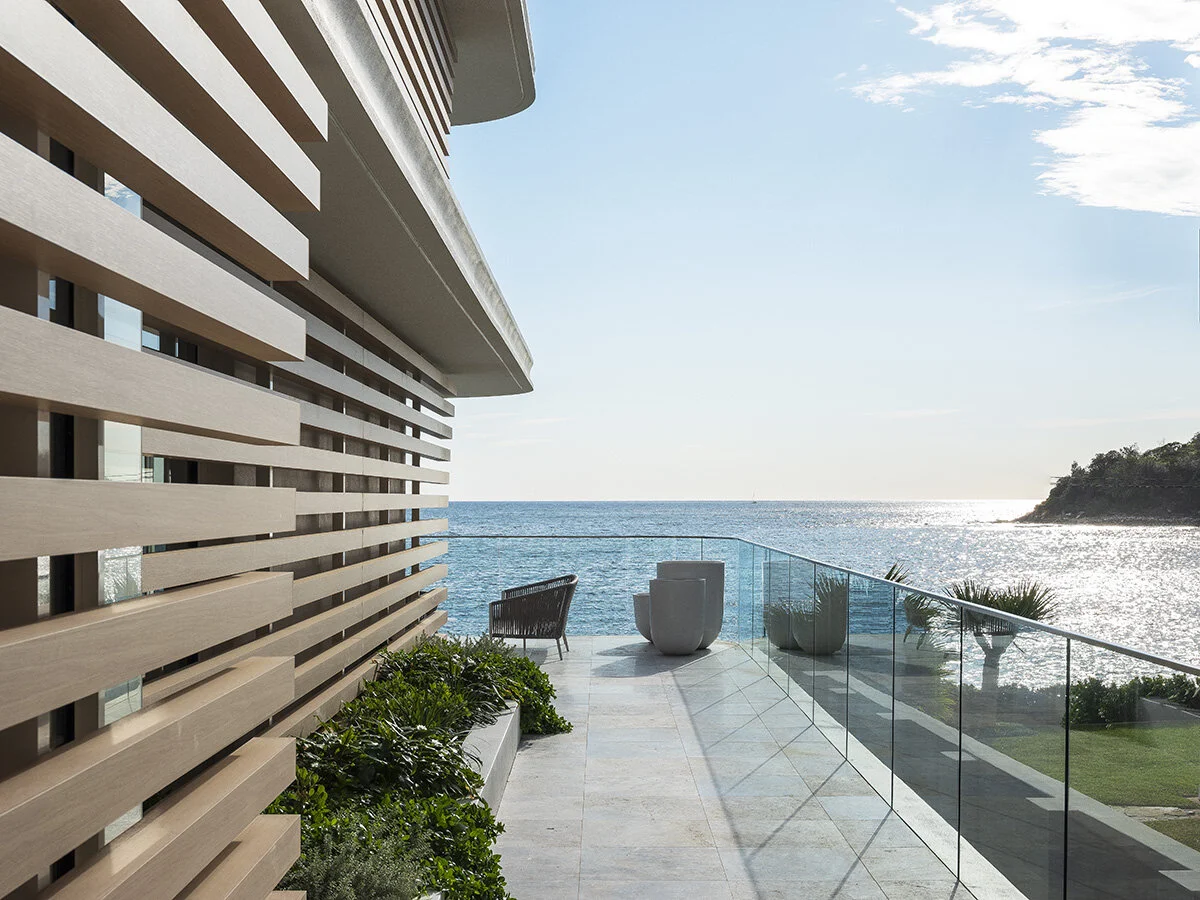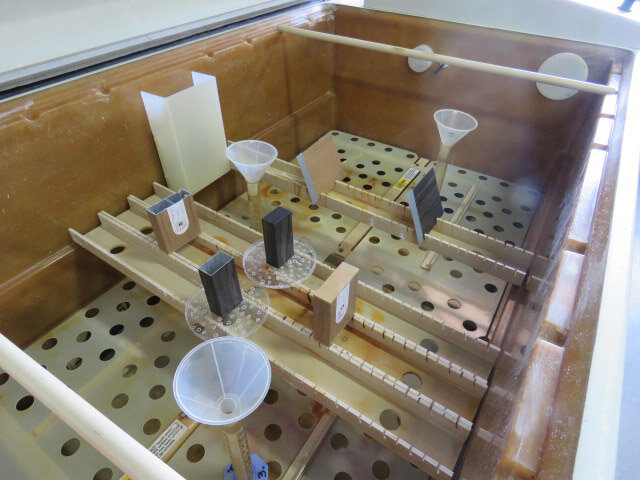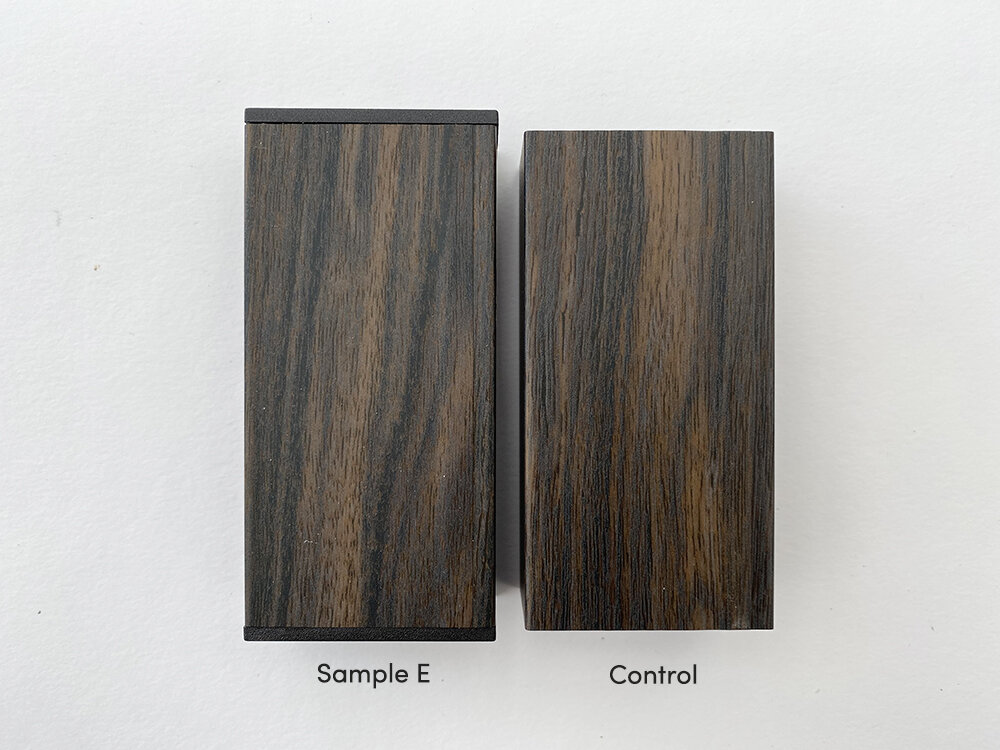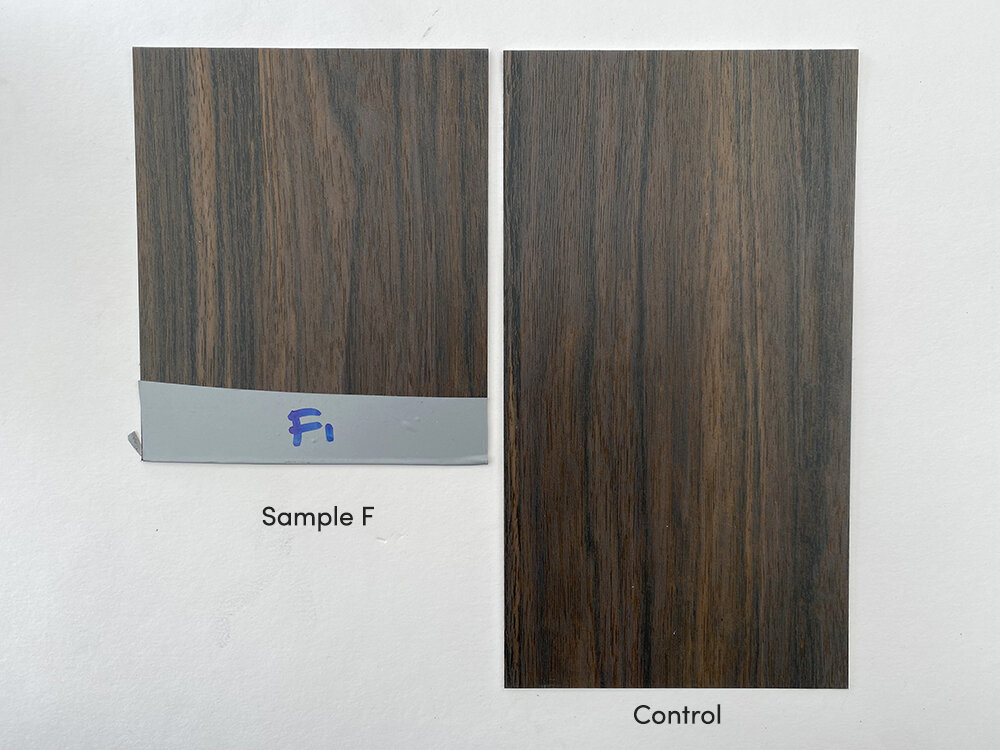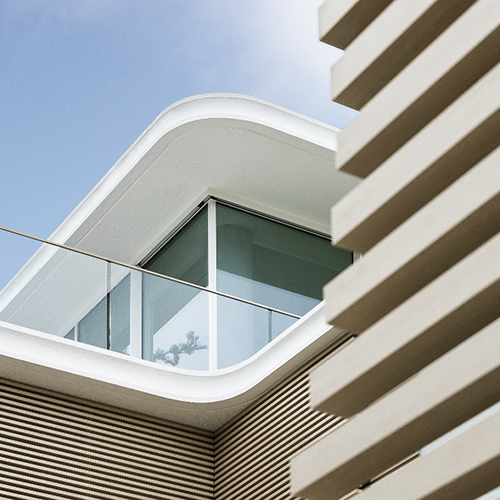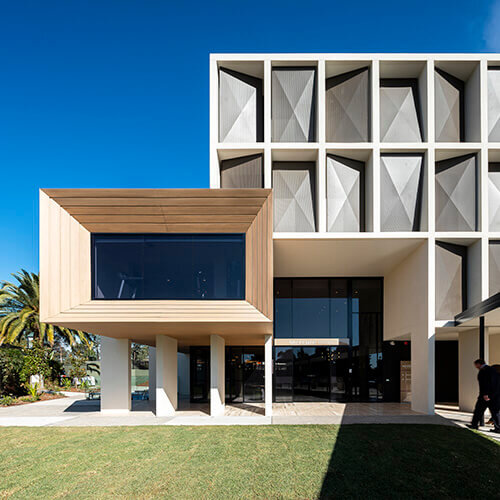Adding to the list of accelerated ageing tests that Covet’s timber look aluminium cladding has been subjected to, we recently commissioned an independent ASTM B117 salt fog test to evaluate Ever Art Wood®'s resistance to atmospheric corrosion. Read about the test, the process and how well it performed after 500 hours of exposure.
Some of the most breathtaking settings for beautiful buildings are also some of the harshest environmental conditions. Coastal buildings are lashed by wind, fog, salt, rain, and, of course, the harsh Australian sun, and they need to be made of tough stuff to last.
Designers and architects need to be able to rest in the knowledge that their chosen building materials will perform over many years of service, when exposed to the elements day in, day out.
When a timber aesthetic is desired in such environments, timber look aluminium products provide designers an infinitely more viable option than use of genuine timber. Timber look aluminium however is still subject to the threat of atmospheric corrosion, where the surface of the material could be degraded through prolonged exposure to water and water soluble pollutants, such as salt. Corrosion can impact not only the base metal of timber look products but the timber look finish applied. Both the base metal and coating need to be durable enough to endure the ongoing impacts of salt, moisture and humidity.
Manufactured in Japan, the Ever Art Wood® range is comprised of pre-finished aluminium extrusions and sheets, with a machine applied timber look wrap. We set out to prove just how durable Ever Art Wood® cladding is, subjecting it to a rigorous independent ASTM B117 salt fog test for corrosion resistance.
About Salt Fog Testing
Corrosion testing determines how metal components and parts perform when exposed to environmental conditions that may cause them to corrode. Using a controlled environment, the rate of corrosion can be accelerated with salt exposure to compare materials or material combinations.
Internationally recognised and one of the most widespread and long-established corrosion tests, the salt fog or salt spray test is conducted all over the world in various industries including automotive, aerospace and military applications. One of a suite of accelerated ageing tests, it subjects metals and coated metal products to corrosive attack in order to evaluate the suitability of the material for use in corrosive environments.
The purpose of the test is to evaluate the corrosion resistance and durability of both the base metal and coatings applied. The effect of corrosion is evaluated through observation of the test specimen’s appearance following a specified period within the test chamber - specifically looking for blistering, loss of adhesion of the coating, corrosion of the base metal, or any other abnormalities including the presence of rust or other oxides.
About the Standard & the testing process – ASTM B117
ASTM B117 was the first internationally recognized salt spray standard, originally published in 1939, and outlines the standard practice for operating Salt Spray (Fog) Apparatus.
The salt fog test involves placing a test specimen in a salt fog chamber (see figure 1). A salt solution set at neutral pH is fed into the chamber via an atomiser. Conditions in the chamber are set at condensing humidity – with the test samples constantly “rained on” or sprayed with salt solution at a temperature of 35 degrees celsius. The resulting environment of dense saltwater fog produced in the chamber exposes the test specimens to severely corrosive conditions.
The test duration varies depending on the specimens being tested and their expected corrosion resistance. For example, a typical test duration for pre-treated and painted metal components is 96 hours.
Testing Covet Ever Art Wood®
Covet Ever Art Wood® was tested by the Product Testing Division of the Australian Wool Testing Authority, a certified NATA Lab in Melbourne.
- Test Machine: Salt Spray (Fog) Apparatus
- Testing duration: 500 hours
- Testing Process:
- Six samples of Ever Art Wood® were tested, including three different profiles - a batten extrusion closed with end caps, an open batten extrusion and a flat panel sheet.
- Testing process as Standard Practice for Operating Salt Spray (Fog) Apparatus ASTM B117-2018
- Test Parameters: Salt solution set at neutral pH. Salt solution is fed into the chamber via an atomiser. Samples subjected to constantly condensing levels of humidity at temperature of 35 degrees celsius.
The Results
Two material tests from Covet’s Ever Art Wood® palette were conducted – Kuri Masame (light) and Burakku Eboni (dark).
Figure 1: The inside of the salt fog test chamber
Sample A: Kuri Masame End Cap Open
Appearance Assessment
Blistering: Nil
Base Metal Corrosion: Nil
Loss of Adhesion: Nil
Other abnormalities: Nil
Sample B: Kuri Masame End Cap Closed
Appearance Assessment
Blistering: Nil
Base Metal Corrosion: Nil
Loss of Adhesion: Nil
Other abnormalities: Nil
Sample C: Kuri Masame Sheet
Appearance Assessment
Blistering: Nil
Base Metal Corrosion: Nil
Loss of Adhesion: Nil
Other abnormalities: Nil
Sample D: Burakku Eboni Open
Appearance Assessment
Blistering: Nil
Base Metal Corrosion: Nil
Loss of Adhesion: Nil
Other abnormalities: Nil
Sample E: Burakku Eboni End Cap Closed
Appearance Assessment
Blistering: Nil
Base Metal Corrosion: Nil
Loss of Adhesion: Nil
Other abnormalities: Nil
Sample F: Burakku Eboni Sheet
Appearance Assessment
Blistering: Nil
Base Metal Corrosion: Nil
Loss of Adhesion: Nil
Other abnormalities: Nil
The verdict
After continuous exposure over a robust period of 500 hours, no change in the appearance of the product was seen in any of the six samples tested. The assessment revealed nil change overall, and absence of commonly observed corrosion characteristics including blistering, base metal corrosion, loss of adhesion or any other abnormalities.
Additionally, comparison between a control sample and the samples tested show no visible fading of the Ever Art Wood® timber look finish.
These test results, in conjunction with the performance of Ever Art Wood® in other accelerated ageing tests, provides designers with confidence that Ever Art Wood® can stand up to the challenges of Australia’s harshest conditions over many years.

